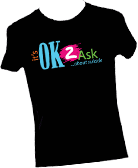You won't be able to solve all the problems of a friend or classmate, but you could help them find someone who can help. The first way you can help is to recognize the signs that someone may be at risk for suicide.
You probably know your friends better than anyone - you may be able to see that something is bothering them - even when no one else has a clue that anything is wrong.
What a person could do
The following signs may indicate they are considering suicide:
- Suddenly doing badly in school - good students that all of a sudden
- ignore homework
- cut classes
- don't show up for school at all
- Does not want to do things they used to love doing
- Have an unusual interest in death or violence
- through poetry, essays, doodling or artwork
- an obsession with violent movies, video games or music
- a fascination with weapons
- Give away important possessions
- Change in friendships
- suddenly rejects their friends
- begin hanging out with teens that abuse substances or other risky behavior
- a friend who doesn't want to see you anymore for no reason
- someone that says that "you just don't understand me any more"
- Mood swings or change in personality
- gloomy or sad
- silent
- withdraws from family and friends
- angry
- acts inappropriately
- Shows signs of an abusive relationship - Some teens may be physically or emotionally abused by a family member, girlfriend or boyfriend. Signs of abusive relationships include bruises or injuries that the person doesn't want to talk about.
- Neglect their appearance and/or cleanliness
- Change in eating habits - eats too much or too little
- Change in sleeping habits - sleeps too much or too little
- Struggle with gender identity - gay, lesbian, bisexual and transgendered, or questioning teens have higher suicide attempt rates than heterosexual teens
- Fall victim to bullying - kids who are bullied, pushed around or harassed may be at risk of suicide
- Physical symptoms - complains a lot about headaches, stomachaches or other pain
- Experiment with risky behavior -
- suddenly starts having unprotected sex or sex with multiple partners
- begins using drugs or alcohol
- driving recklessly or without a license
- stealing
- vandalizing property
- cutting themselves or trying other types of self-injury
What a person might feel
- depressed
- sad
- hopeless
- desperate
- unloved
- no purpose in life
- angry
- no energy or enthusiasm
- tired all the time
|
- withdrawn
- over-sensitive
- no self-esteem
- guilty
- lack of concentration
- can't make a decision
- restless, agitated
- cry for no reason
|
What a person might think or say
- talk or write about suicide or death
- say they have made a plan to kill themselves
- give away their things
- drop out of school, sports or other enjoyable activities
- get a weapon or something else that might hurt themselves
- say things like:
- Life is meaningless
- I wish I were dead
- I'm going to end it all
- You'll be better off without me
- What's the point of living?
- Soon you won't have to worry about me
- Who cares if I'm dead, anyway?
- Nothing matters any more




